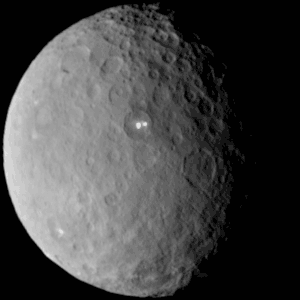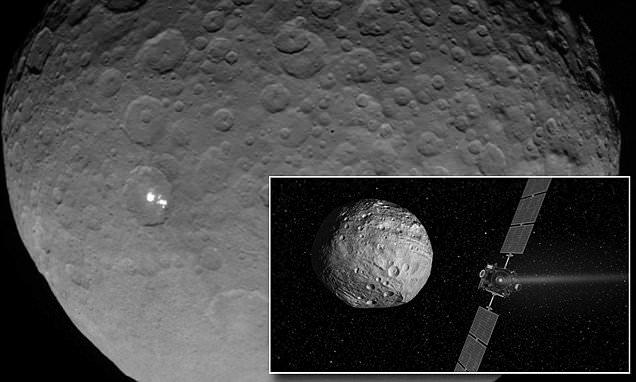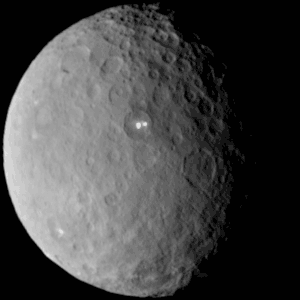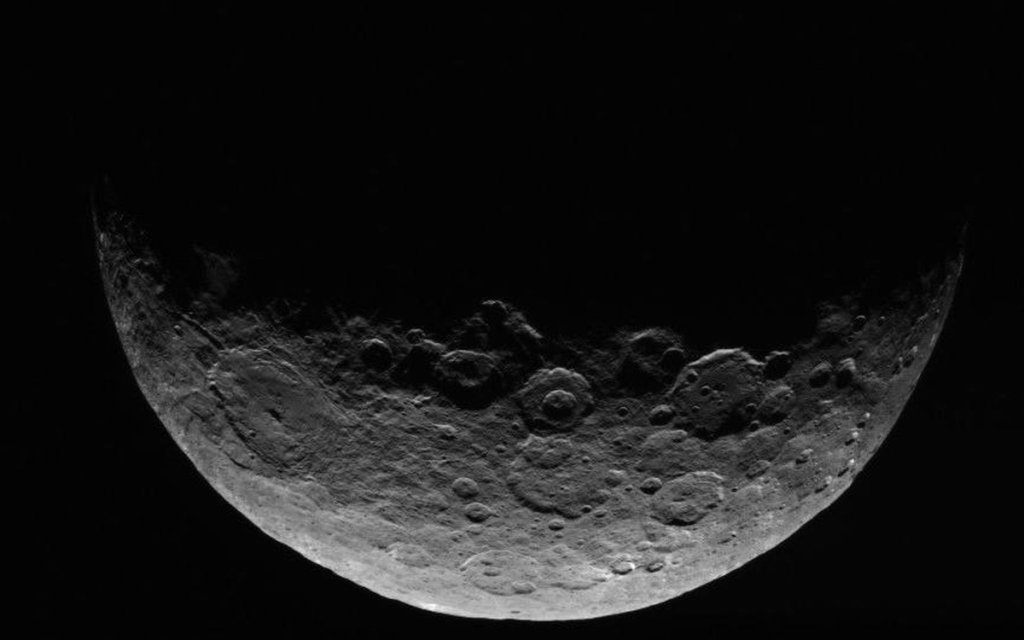

This year, after 2 and a half years of traveling, Dawn finally made it to Ceres. It was just a few months ago (March 2015) that Dawn finally had its rendezvous with the small dwarf planet. On its journey, Dawn took a 14-month tour of the asteroid Vesta before heading off to the small world in the middle of our solar system.
Ultimately, Ceres is an intriguing object. It is just 590 miles (950 km) in diameter, making it on the smallish side, cosmologically speaking; however, Ceres is the largest object in the main asteroid belt between Mars and Jupiter. This makes it a prime target for exploration, as it may be able to give us unique insights into the asteroids that populate this region.
However, once Dawn finally arrived at its target, it noticed something strange. Ceres seemed to have a bright flash of light coming off its surface. The flashes initially perplexed astronomers, and the “alien” signal quickly made the rounds on the internet.
In the latest images, which are much closer and sharper (taken while Ceres was just 8,700 miles [13,000 km] away from the spacecraft), this fascinating bright spot has shown that it is actually a number of smaller bright spots on the surface of the dwarf planet.
Although we still have a bit to flesh out, we now have a pretty solid idea of what these flashes are (and no, it’s not aliens). “Dawn scientists can now conclude that the intense brightness of these spots is due to the reflection of sunlight by highly reflective material on the surface, possibly ice,” said Chris Russell, who is the principal investigator on the mission.

In an attempt to better understand this rocky world, Dawn will spend the next several months snapping images and analyzing the geology and surface chemistry of the dwarf world. Of course, the intent is not simply to better understand these flashes (after all, we didn’t even know they were their until Dawn’s arrival), but to acquire some insights into the mechanisms that helped to create the dwarf planet (and other objects in the asteroid belt that are similar to it), and to also come to a better understanding ot the processes that have sculpted it since its initial formation some 4.5 billion years year ago.
Having completed its first orbit, Dawn will spiral inwards in order to get better images and measurements. NASA will continue to lower the spacecraft throughout the year until it reaches its minimum altitude of 235 miles (370 km). This second orbit, which will commence on 6 June, will see Dawn moving just 2,700 miles (4,400 km) from the surface.
More about Dawn’s incredible accomplishment can be found in the excellent Dawn Journal, written by Dawn chief engineer and mission director Marc Rayman.
